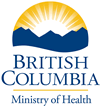Other Case Studies
The SMART partnership supports improved law enforcement and biological monitoring in protected areas around the world. They came to Refractions to build a software tool to help meet their needs.
Hectares BC – Biodiversity BC on behalf of a broad partnership
Biodiversity BC and its government and non-government partners were looking for regional-level environmental statistics. Refractions proposed a new approach to generating GIS summaries, using the power of a relational database and web tools to provide GIS analysis to users who previously had no access to it.
Automated Route Planning for Meter Reading – City of Vancouver
The City of Vancouver collects water readings from thousands of residences and businesses, but has never optimized the pedestrian routes the readers take. Refractions developed algorithms to create the most efficient routes of the correct length for readers.
Digital Road Atlas – BC Integrated Land Management Bureau
Refractions provides full-service support for the British Columbia Digital Roads Atlas – systems design, maintenance, data conflation, client service, and rapid response.
Caribou Habitat Assessment and Supply Estimator – Wildlife Infometrics Inc.
Refractions converted a legacy habitat modelling system based on ArcView 3.X to ArcGIS 9.2, and automated the workflow to provide faster turnaround time for model runs.
Line Cleaner – BC Ministry of Forests
The British Columbia Ministry of Forests needed a tool to conflate multiple roads databases into a single working layer. Refractions delivered the algorithms and a user interface based on the uDig platform.
Interest Reports – BC Ministry of Agriculture & Lands
Refractions developed an ArcMap extension to automate the calculation of standard reports joining a massive shape-file archive with a large Oracle database.
Mobile GIS – UN Food & Agriculture Organization
UN FAO needed a data collection tool that could run disconnected and didn't have a per-seat licensing cost. Refractions delivered a simple tool using the uDig desktop platform.
Open Web Services, Phase 3 – Open Geospatial Consortium
The Open Geospatial Consortium runs regular “testbed” projects to field-test new concepts in geospatial interoperability. Refractions was a part of the OWS-3 initiative, and built a uDig-based “GeoDSS” client to provide access to several other OGC standard services, including a prototype GeoVideo service.
Natural Language Spatial Search Engine for Rental Places-Rento
Rento is a free web service that makes it easy to find a place to rent in Greece. Powered by PostgreSQL and PostGIS, it provides ad listings with photographs displayed on a map. Searching is accomplished through map navigation and natural language processing, with the search engine being capable of answering complex (spatial) questions such as "flat near the University of Athens" or "loft up to 800 euros near a metro station" (in greek).
Travel Access Program – BC Ministry of Health
Project Background

The British Columbia Ministry of Health administers the health insurance for all British Columbia residents, through the Medical Services Plan (MSP). In addition, Health has a wide range of public health responsibilities, to ensure access to quality health care for all British Columbians
In 2003, Health was charged with creating a “Travel Access Program” (TAP) to cover the costs of medically necessary travel for patients in rural and remote areas of the province forced to travel to urban centers for care. But, before the Ministry could set the terms of the program, they needed to know more about the people they were supposed to assist.
- Who was traveling for treatment?
- Where were they traveling to and from?
- What procedures were they traveling for?
The Ministry of Health engaged Refractions to provide the analysis necessary to understand the size and financial scope of a Travel Access Program, and provide tools to view the patterns of medical travel in British Columbia.
Refractions' Approach
Rather than attempt to gather information about patient travel directly, through an expensive and time-consuming patient survey, Refractions turned to a ready source of information about medical access patterns: the Medical Services Plan (MSP) billing database. Every physician service, in office or in hospitals, is billed through MSP, and the database has a record of both the patient and the doctor.
Refractions received an anonymized snapshot (with patient and physician identifying information removed, except for the regional area identifier) of the MSP database for three years, containing over 50 million transactions, and loaded the information into a PostgreSQL database. We then ran through the records sequentially for each patient, creating a profile of services, that showed billings that grouped together in time, like a set of services associated with a hospital stay, or an office visit. We then matched the services to the doctor providing the service, and determined if the patient and doctor were in the same region. If not, the profile indicated travel, and we saved back the profile for further analysis.
We used ESRI's ArcView and Network Analyst to create a database of all the travel distances between health delivery areas in the province, and fed that information back into the analysis, to reflect the true travel costs of moving between areas of the province.
Running this process on the 50 million records, we produced a subsidiary database of several thousand records, that showed the patterns of travel between each of the 100 health delivery areas in the Province, and the treatments associated with each trip. We exposed this database via a web mapping interface (using Mapserver and PHP), that could show a thematic map of number of trips, themable by treatment, destination, source, and other variables. Ministry of Health staff used the database to formulate the policies for what travel would be reimbursable under the new program.